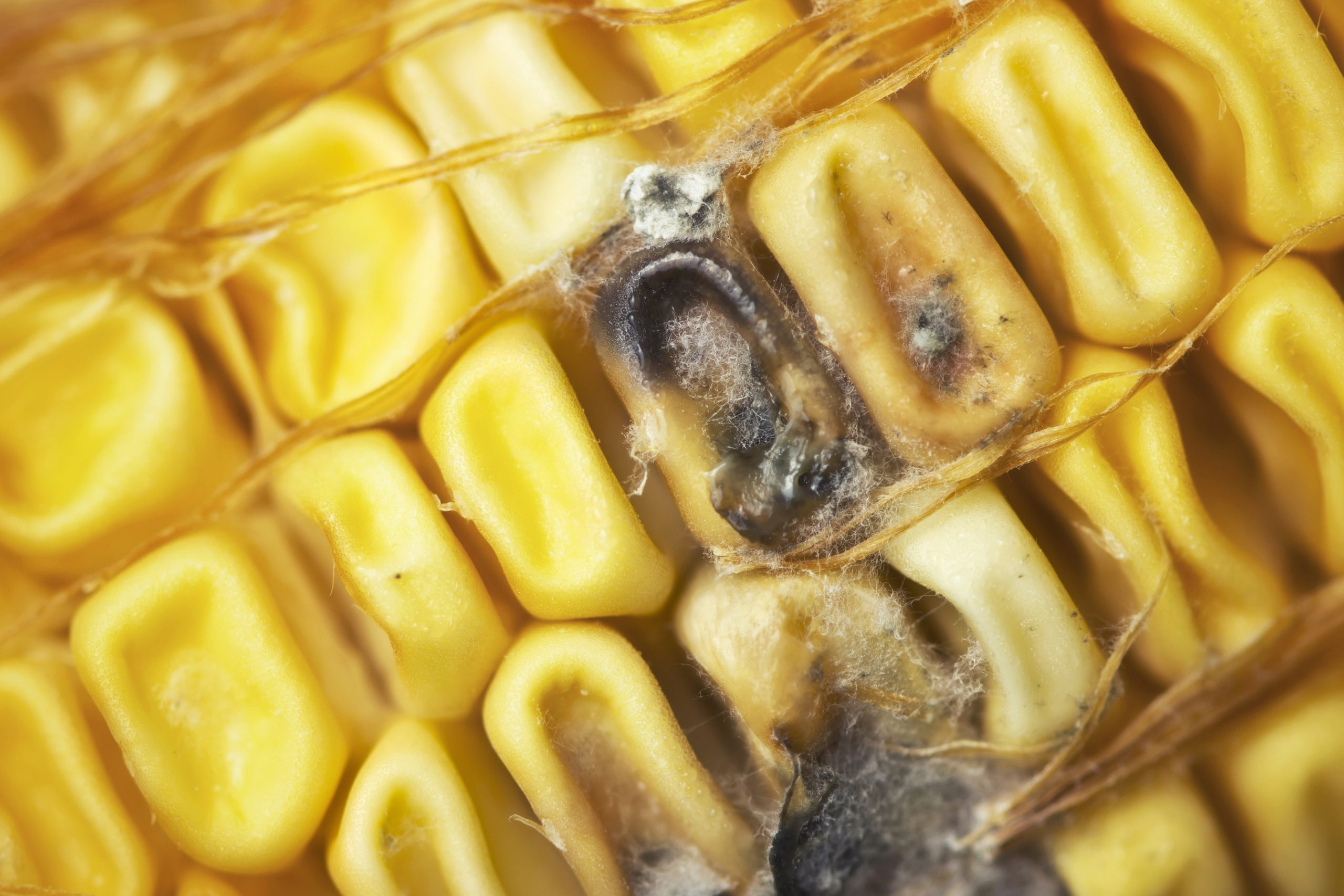The importance of modified forms of mycotoxins

Fungi can produce secondary metabolites under specific circumstances of moisture and temperature. These metabolites are organic compounds that have no direct role in the fungal metabolism. They will instead discourage predators to consume the fungi or suppress fungal competition. Some of these are toxic to humans and animals. These toxic metabolites are called mycotoxins.
Crops can be contaminated with mycotoxins already on the field (pre-harvest) or during transport, storage or processing (post-harvest). A survey of mycotoxin contamination in Europe and Asia showed that deoxynivalenol (DON) and zearalenone (ZEN) are 2 of the most important mycotoxins in Europe based on occurrence and toxicity. Both toxins belong to the group of fusariotoxins produced by Fusarium species and often co-occur.
Adverse health effects from mycotoxin ingestion
Deoxynivalenol belongs to the chemical group of type B trichothecenes. Ingestion of contaminated feed and food will cause adverse health effects like emesis, reduced body weight gain and other gastro-intestinal disorders.
Zearalenone is the principal representative of the non-steroidal myco-oestrogens. It causes alterations in the reproductive tract and hyperestrogenism. This is typically associated with inter alia enlargement of the uterus, testicular and ovarian atrophy and abortion. Haematotoxic, cytotoxic and genotoxic properties are also assigned to ZEN.
Modified or masked mycotoxins
Sometimes the concentration measured in contaminated commodities does not correlate with the observed clinical signs. This has led to the discovery of modified or masked mycotoxins. This name has been given because they have the ability to escape detection by routine analytical methods. These compounds arise from the parent mycotoxins by biological or chemical modification.
2 types of modification to the parent compound exists in fungi:
- the fungal precursors and
- the modifications to the parent compound.
Both 3-acetyl-deoxynivalenol (3-ADON) and 15-acetyl- deoxynivalenol (15-ADON) are examples of biosynthetic precursors of DON in Fusarium species. They are also classified as free mycotoxins. Next, non-mycotoxin producing fungi can metabolise parent mycotoxins. This is already described for Rhizopus fungi. These fungi are able to transform ZEN to ZEN-14-glucoside or ZEN-14-sulphate.
Animal sensitivity to mycotoxins
The fate of these compounds in animals depends on the animal species. Pigs are much more sensitive to these mycotoxins than poultry. This difference in sensitivity is mainly due to differences in toxicokinetic properties. DON will mainly undergo glucuronidation in pigs and sulphatation in chickens. In addition, this phase II metabolism is stronger in chickens, which explains the lower sensitivity. This difference makes the comparison very interesting.
In pigs, 3- and 15-ADON are completely absorbed after oral ingestion. This results in ADONs having the same systemic toxicity as DON. In broiler chickens on the other hand, only a fraction of DON, 3 and 15-ADON is absorbed. This fraction is higher for the ADONs than for DON. 3-ADON is completely hydrolysed, 15-ADON on the other hand is only partially hydrolysed. This indicates that for broiler chickens after intake of 3/15-ADON, the exposure to DON will be higher than after ingestion of DON itself.
To summarise, broiler chickens and pigs are exposed to DON after ingestion of ADONs. In pigs, DON was detected after post oral intake of DON3G. This demonstrates the importance of the modified forms to the total daily intake (TDI) of DON.
More toxicokinetic research necessary
Knowledge about these modified forms of mycotoxins is essential because they contribute to the overall effect of mycotoxins to human and animal health. It is not only necessary to perform more toxicokinetic research using plasma as described above, but also other matrices from animal origin may be interesting to investigate.
Innovad, in collaboration with Ghent University, has embarked on a research program dedicated to analyse urine and faeces or excreta that will give information about which phase I and II metabolites are formed. How long they remain present after exposure and if they can be linked to the exposure are also relevant research topics. Furthermore it is important to pay attention to the possibility of co-contamination with different mycotoxins. This can lead to synergistic toxic effects. This demands methods to quantitatively detect multiple mycotoxins in plasma and other matrices to further explore the possible risks of these conjugated or modified mycotoxins.
To read more on this subject, click here.
Author: Marianne Lauwers, Phd Research Ghent University And Ben Letor, Innovad











